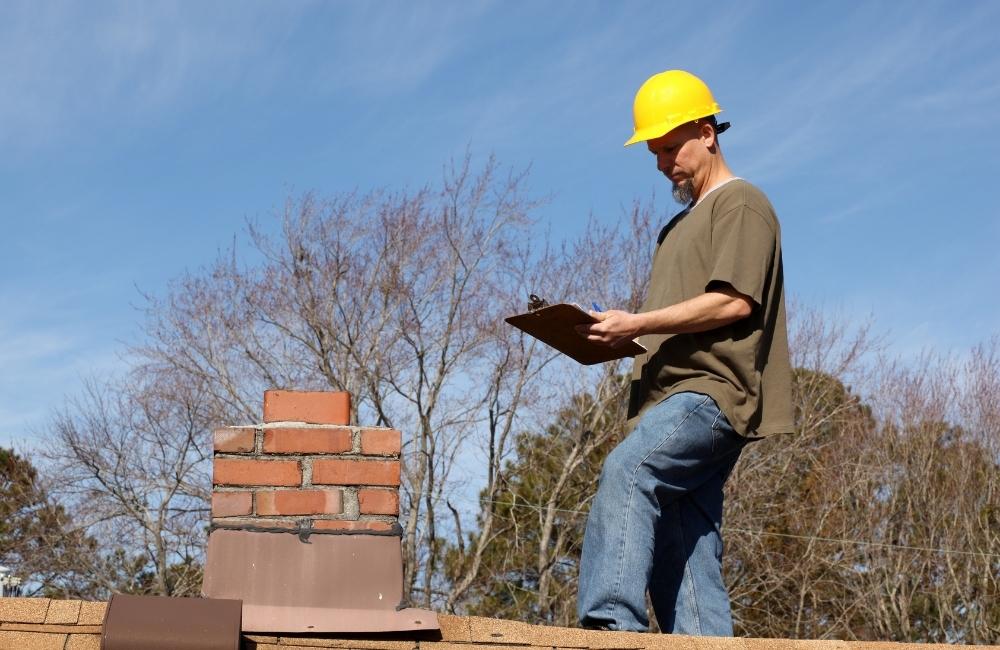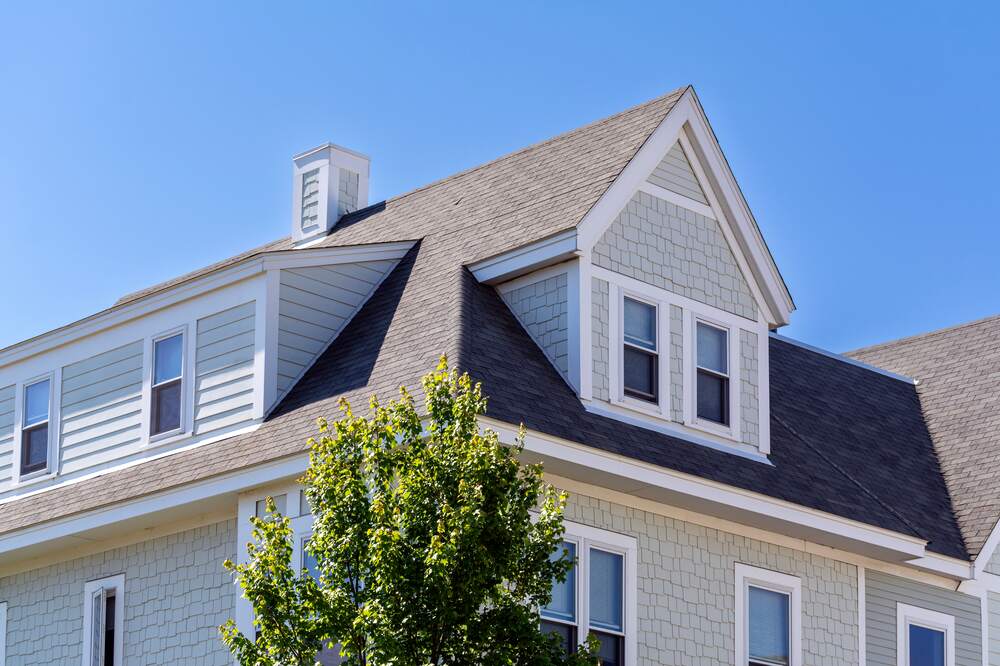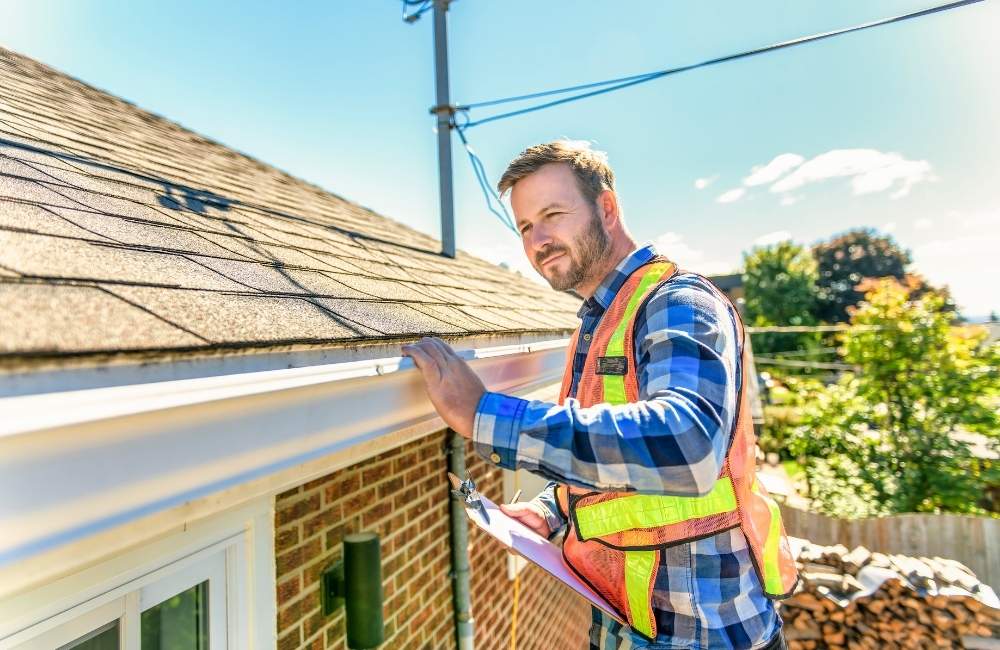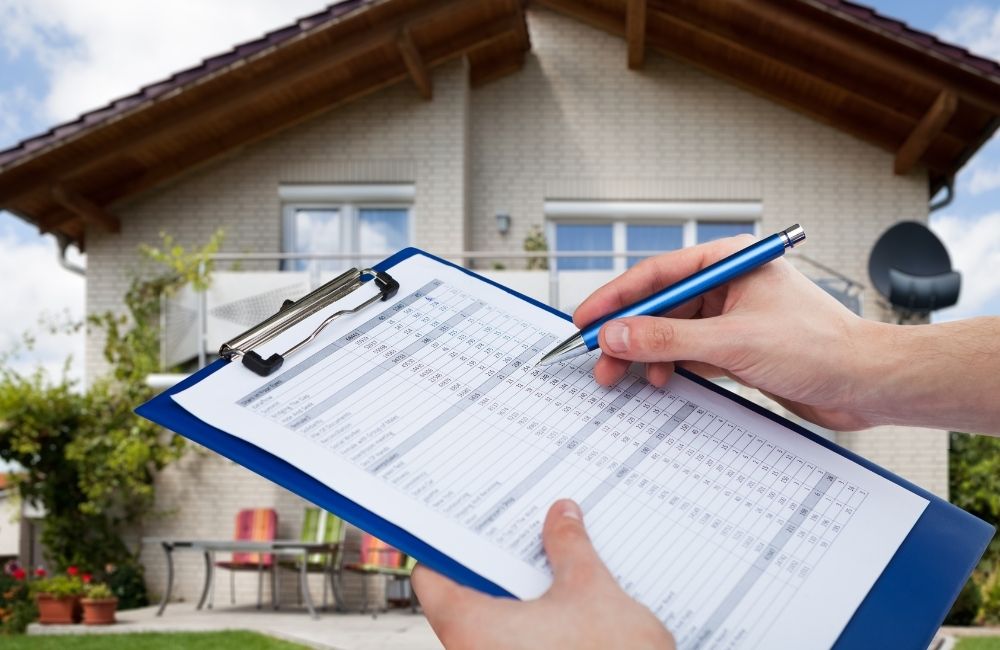
Why Regular Roof Inspections Save You Money in the Long Run
A roof is one of the most important investments for any home. It protects against weather, helps maintain structural integrity, and supports energy efficiency. However, many homeowners overlook the significance of routine maintenance until it’s too late. Ignoring a roof’s condition can lead to costly repairs or full replacements that could have been avoided.
By investing in professional roof inspection now, homeowners in Hyde Park, NY, can prevent future financial headaches.
Table of Contents
Key Takeaways
✔ Regular roof inspections detect minor damages before they escalate into major, expensive repairs.
✔ Routine inspections and timely maintenance maximize the longevity of roofing materials and systems.
✔ Early detection through roof inspections protects drywall, flooring, insulation, and electrical systems from water damage.
✔ Inspections identify air leaks, poor insulation, and ventilation issues that drive up energy bills.
✔ A well-maintained roof enhances curb appeal, strengthens negotiations, and prevents failed home inspections.
✔ Regular professional inspections uphold warranty requirements and simplify the claims process if needed.
✔ Scheduled inspections prepare roofs for storms and prevent costly, unexpected failures.
What Happens During a Roof Inspection?
A thorough roof inspection is more detailed than a casual glance from the ground. Roof inspection services ensure that every part of the roof is evaluated. Professional roof inspection specialists have the training and tools to spot problems that may be invisible to the untrained eye. This thorough approach saves homeowners money by ensuring that minor concerns are resolved before they escalate. Professional roof inspection services typically include:
- Shingle Examination: Checking for cracks, curling, blistering, or missing shingles.
- Flashing and Seal Inspection: Ensuring that the seals around vents, chimneys, and skylights are watertight.
- Gutter System Check: Looking for blockages, sagging, or improper water drainage that could lead to roof damage.
- Structural Assessment: Evaluating sagging areas or compromised roof decking.
- Signs of Water Damage or Rot: Identifying discoloration, moss growth, and wood rot that signal moisture problems.
7 Reasons Regular Roof Inspections Are Crucial for Your Home
1. Identify Small Problems Before They Become Big Repairs
A major advantage of scheduling regular roof inspections is the ability to catch small problems early. Minor damages often hide in plain sight, but a professional roof inspection can spot these vulnerabilities before they escalate into major and costly repairs.
Early roof leak inspection through professional roof inspection services ensures that these minor vulnerabilities are addressed quickly. Common issues that early inspections can uncover include:
- Cracked or Missing Shingles: These weaken the roof’s ability to shed water, leading to gradual leaks and eventual structural compromise.
- Worn Flashing Around Chimneys and Vents: Damaged flashing is one of the most common sources of roof leaks, and it can lead to water infiltration that spreads throughout the attic and walls.
- Pooled Water or Poor Drainage: Flat or low-slope areas where water accumulates can weaken roofing materials and foster mold growth.
- Small Punctures or Tears: Hail, debris, and animal activity can cause minor tears that worsen with each rainstorm if untreated.
Each of these issues, if left unchecked, can turn into much larger structural problems. For example, a small puncture today might become a full roof leak in a few months, resulting in:
- Water-Damaged Insulation: Decreasing energy efficiency and driving up utility costs.
- Warped or Stained Drywall: Leading to expensive interior repairs.
- Electrical Hazards: As water seeps into wiring systems, it poses both safety and financial risks.
2. Extend the Lifespan of Your Roof
Roofs are built to be durable, but they are not invincible. Even the best roofing materials deteriorate under constant exposure to the elements. Regular roof inspection ensures that homeowners get the full value out of their roofing investment. Key reasons regular inspections extend roof life include:
- Timely Maintenance of Protective Layers: Roofs consist of multiple layers, including underlayment and sealants. Routine inspections ensure that these vital layers remain intact, preserving the roof’s water-resistance.
- Monitoring of Ventilation and Insulation: Poor attic ventilation can cause heat buildup, leading to premature roof aging. Roof inspection services assess ventilation efficiency and insulation health to prevent avoidable degradation.
Scheduling a professional roof inspection at least twice a year—especially in the spring and fall—gives roofing specialists a chance to:
- Spot Seasonal Damage: This includes ice dams after winter or cracked shingles after a hot summer.
- Check for Storm Impacts: After severe weather events, immediate inspections can prevent minor storm damage from spiraling into major problems.
3. Prevent Interior Damage and Costly Home Repairs
One of the most underestimated risks of neglecting regular roof inspection is the extensive interior damage that can result. When small roofing issues go undetected, water infiltration can wreak havoc throughout a home, leading to significant repair bills and compromised living conditions.
A professional roof inspection examines all critical weak points and addresses potential entry points for water. Roof inspection services are not just about maintaining the exterior—they protect the entire investment inside the home, preserving its safety, comfort, and value.
Key areas vulnerable to hidden roof leaks include:
- Drywall and Ceilings: Water stains, warping, and crumbling drywall are early signs of hidden roof leaks. Left untreated, ceilings can collapse, requiring costly reconstruction.
- Flooring and Carpeting: Moisture can seep into wood flooring or carpet padding, leading to buckling, staining, and even full replacement needs.
- Insulation: Wet insulation loses its thermal properties, driving up energy costs and necessitating removal and reinstallation to maintain efficiency.
- Electrical Systems: Roof leaks can drip into wiring and junction boxes, creating fire hazards and necessitating expensive electrical repairs.
- Furniture and Personal Belongings: Water intrusion can ruin furniture, electronics, and irreplaceable personal items stored in attics or upper floors.
- Mold and Mildew Growth: Moist, hidden spaces promote mold, which can spread rapidly, damage surfaces, and introduce significant health risks for occupants, including respiratory issues.

4. Boost Your Home’s Energy Efficiency
A roof in poor condition doesn’t just leak water—it leaks money. Small defects that allow water to enter often allow air to escape, disrupting indoor temperatures and forcing HVAC systems to work overtime.
Conventional roofs can heat up to 150°F or higher on a sunny summer afternoon, making proper ventilation and insulation critical to maintaining indoor comfort and reducing energy costs.
By investing in consistent roof leak inspection and maintenance, homeowners not only protect their homes from damage but also enjoy long-term savings on utility costs, making roof inspection a smart financial strategy
Common energy-related issues detected during professional roof inspection include:
- Missing or Damaged Insulation: Water-damaged or improperly installed insulation allows conditioned air to escape, making it harder to heat or cool the home.
- Air Leaks Around Penetrations: Gaps around chimneys, skylights, or vent pipes create pathways for energy loss, contributing to drafty interiors.
- Poor Attic Ventilation: Inadequate airflow in the attic causes heat buildup during summer and moisture retention during winter, both of which strain HVAC systems.
- Damaged Roofing Materials: Cracked or missing shingles and exposed underlayment weaken the roof’s ability to maintain thermal integrity.
A professional roof inspection ensures that all sealing, insulation, and ventilation systems are working together properly, maximizing a home’s energy efficiency. The impact of a compromised roof on energy bills includes:
- Higher Heating and Cooling Costs: HVAC systems run longer and harder to compensate for lost air, inflating monthly energy expenses.
- Inconsistent Indoor Temperatures: Certain areas of the home may feel colder in winter or hotter in summer due to poor insulation or ventilation.
5. Maintain Your Home’s Property Value
The condition of a roof plays a crucial role in maintaining and enhancing a home’s market value. Buyers and appraisers pay close attention to roofing because it directly impacts both the aesthetic and structural soundness of a property.
By consistently investing in roof inspection services and roof leak inspection, homeowners protect their property from devaluation and improve their prospects for a smooth, profitable sale when the time comes.
Key ways roof inspection protects property value:
- Preserves Curb Appeal: A clean, intact roof greatly enhances the first impression of a home. Damaged or worn roofing materials can make even a well-maintained home appear neglected.
- Demonstrates Responsible Ownership: Documentation from regular professional roof inspection services shows prospective buyers that the home has been properly cared for, boosting buyer confidence.
- Avoids Inspection Failures: Home inspections are a standard part of real estate transactions. A neglected roof often results in failed inspections, forcing sellers to either make costly repairs or accept reduced offers.
- Strengthens Negotiation Power: Homes with recently completed roof inspection reports and maintenance records can command a stronger position during negotiations and justify a higher asking price.

6. Maximize Warranty Benefits
Roof warranties are valuable financial tools designed to protect homeowners from unexpected repair costs due to manufacturer defects or workmanship errors. However, these warranties often come with specific maintenance requirements.
Without documented roof inspection services, homeowners risk losing significant warranty benefits and bearing the full cost of repairs themselves. Protecting warranty coverage with consistent inspections is a smart, preventative investment.
Regular roof inspection supports warranty protection through:
- Proof of Ongoing Maintenance: Manufacturers typically require evidence of routine professional roof inspection services to honor claims. Skipping inspections can nullify the warranty.
- Early Identification of Covered Issues: A professional roof inspection can catch problems that are still under warranty coverage before they evolve into larger, non-covered issues.
- Avoidance of Disqualifying Damage: Neglecting minor maintenance tasks, such as clearing debris or fixing small leaks, may be grounds for voiding warranty claims. Regular inspections ensure these tasks are completed.
- Streamlined Claims Process: Detailed inspection reports create a clear paper trail, simplifying and speeding up warranty claims if problems arise.
7. Protect Against Unexpected Emergencies
Weather events and unforeseen accidents can put a roof to the test at any moment. Without regular roof inspection, minor vulnerabilities can go unnoticed until an emergency strikes, often leading to urgent—and far more expensive—repairs.
The average cost to repair roof damage caused by hail, wind, or storms is $12,404, with typical repair costs falling between $2,718 and $22,144. Emergency roof repairs often come with higher costs, limited contractor availability, and additional stress.
Scheduling routine roof inspection services is an easy, cost-effective way to prevent sudden roofing disasters and ensure long-term home security. Ways regular inspections help prevent emergencies include:
- Pre-Storm Preparation: A roof leak inspection before a storm season ensures the roof is fortified against heavy rain, snow, or high winds, minimizing the risk of sudden damage.
- Post-Event Assessment: Inspections after major storms catch hidden damage early, preventing issues from worsening under future stress.
- Reinforcement of Weak Spots: Professional roof inspection services can identify and repair aging materials, weak flashing, or clogged drainage systems that are most likely to fail under severe conditions.
How Often Should You Schedule a Roof Inspection?
The ideal frequency for roof inspection varies based on a range of factors, but general guidelines help homeowners stay ahead of potential problems. Regular scheduling ensures that small issues are caught before they turn into expensive repairs.
Standard Recommendation
- Twice Annually: Homeowners should schedule a professional roof inspection once in the spring and once in the fall. These seasons allow contractors to check for winter damage and prepare the roof for upcoming weather challenges.
- Before Buying or Selling a Home: A roof inspection is crucial during real estate transactions. For buyers, it ensures the roof is in good condition before committing to a purchase. Sellers can address any issues ahead of listing to avoid surprises during negotiations.
- In Areas with Frequent Tree Coverage: If your home is surrounded by trees, branches and leaves can quickly accumulate on the roof, potentially causing damage. In such cases, it’s advisable to schedule inspections more frequently to ensure debris buildup or falling branches haven’t caused unnoticed issues.
Additional Situations That Require More Frequent Inspections
- After Severe Weather Events: Major storms, hail, hurricanes, or heavy snowfall can damage a roof even if no immediate signs are visible. A professional roof inspection after such events helps detect hidden issues.
- Older Roofs: Roofs that are 15 years old or older should undergo roof inspection services more frequently, as aging materials are more susceptible to damage.
- High-Risk Roofing Materials: Certain materials, such as wood shingles or clay tiles, require closer monitoring due to their natural vulnerability to weathering, rot, and breakage.
- Extreme Climate Zones: Homes located in areas with high humidity, heavy snowfall, intense sun exposure, or frequent storms should have more frequent roof leak inspections to combat accelerated wear and tear.
Warning Signs That Warrant Immediate Inspection
- Interior Water Stains: Water spots on ceilings or walls often indicate a roof leak and should trigger an immediate professional roof inspection.
- Missing or Damaged Shingles: Visible signs of roof damage call for urgent attention to prevent further deterioration.
- Unexpected Increases in Energy Bills: Poor insulation or ventilation linked to roof damage can drive up heating and cooling costs, signaling the need for roof inspection services.
Frequently Asked Questions
What happens if a roof fails inspection?
If a roof fails inspection, the inspector will provide a detailed report highlighting the areas of concern. Homeowners will need to schedule repairs to address the identified issues. Depending on the severity, repairs can range from simple fixes to major structural work.
Do roof inspectors need to come inside the house?
Yes, roof inspectors often need to access the inside of the home, especially the attic. Interior checks help detect hidden problems like leaks, water stains, mold, or poor ventilation. A complete roof inspection includes evaluating both exterior and interior conditions for accuracy.
Do roof inspectors work in the rain?
Typically, roof inspections are rescheduled if it’s raining or conditions are unsafe. Wet surfaces make it dangerous for inspectors and can prevent them from spotting certain types of damage. Inspecting in dry conditions ensures a thorough and accurate assessment.
What causes a roof to fail inspection?
A roof may fail inspection due to missing shingles, damaged flashing, poor drainage, or signs of structural weakness. Issues like mold, leaks, and inadequate ventilation also contribute to failure. Even minor visible or hidden damage can cause a roof not to meet standards.
How long does a roof inspection take?
A standard roof inspection typically takes between 45 minutes and 2 hours. The exact time depends on the roof’s size, design complexity, and the number of issues found. More extensive damage or difficult access points may slightly extend the inspection time.

Schedule a Roof Inspection with Roofing Experts of Hyde Park Today!
If you’re a homeowner in Hyde Park, NY, don’t wait until small roof problems become major repairs. Roofing Experts of Hyde Park is the trusted choice for professional roof inspection services, helping residents protect their homes, extend roof life, and maintain property value. With decades of experience, Roofing Experts of Hyde Park ensures that every detail is covered, giving you peace of mind no matter the season.
Contact Roofing Experts of Hyde Park today and discover why we’re the top choice for roofing and home exterior services!
